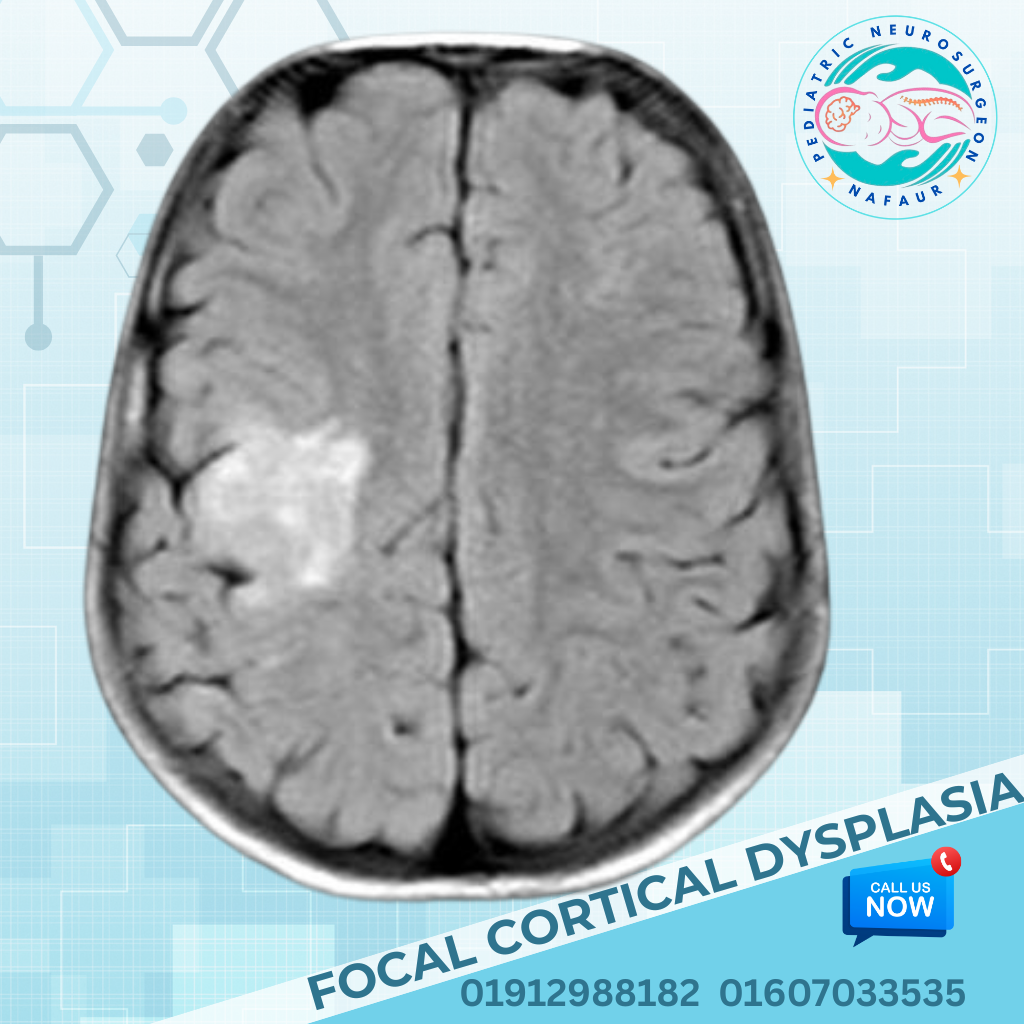Focal cortical dysplasia
Focal cortical dysplasia
Focal Cortical Dysplasia (FCD) is a congenital brain abnormality caused by improper development of the cerebral cortex—the outer layer of the brain responsible for motor skills, cognition, and sensory processing. FCD results from disruption in the normal migration and organization of neurons during fetal brain development, leading to structurally abnormal areas in the brain. It is one of the most common causes of drug-resistant epilepsy in children, especially those who start having seizures early in life. Depending on its location and severity, FCD can lead to frequent seizures, developmental delays, cognitive impairment, and behavioral challenges. 🌍 Focal Cortical Dysplasia in Bangladesh In Bangladesh, pediatric epilepsy is often misdiagnosed or underdiagnosed, particularly in rural and semi-urban areas Lack of awareness about surgical causes of epilepsy, such as FCD, leads to years of uncontrolled seizures in many children Due to limited access to advanced neuroimaging and epilepsy surgery centers, many children are wrongly categorized as untreatable With the availability of pediatric neurosurgical expertise at National Institute of Neurosciences & Hospital (NINS) and Bangladesh Paediatric Neurocare Centre, early diagnosis and effective treatment of FCD are now possible within Bangladesh 🔍 Classification of FCD FCD is classified based on histological and radiological features: Type I: Abnormal cortical layering Type IIa: Abnormal cells without balloon cells Type IIb: Abnormal cells with balloon cells (more severe, often surgically treatable) Type III: FCD associated with other brain lesions (e.g., tumors, vascular malformations) ⚠️ Causes and Risk Factors Most cases of FCD are sporadic and non-hereditary Genetic mutations may play a role in some forms Errors in neuronal migration during early gestation (first trimester) FCD may be isolated or associated with conditions such as tuberous sclerosis complex, hemimegalencephaly, or polymicrogyria 🧒 Symptoms and Clinical Presentation Recurrent seizures, often resistant to anti-epileptic medications Seizures may be focal (involving one part of the body) or evolve into generalized convulsions Onset typically occurs in infancy or early childhood Developmental delay and cognitive regression Behavioral disturbances and attention issues Motor dysfunction or limb weakness if the dysplasia affects motor cortex Speech and language delay if located in temporal or frontal lobes 🛠️ Diagnosis and Evaluation Early and accurate diagnosis of FCD is critical for effective treatment planning: 1. MRI Brain (Epilepsy Protocol) High-resolution 3T MRI reveals cortical thickening, blurred gray-white junction, or abnormal gyri In some cases, MRI may be normal—especially in subtle forms 2. Video EEG Monitoring Records brain electrical activity during seizures to localize seizure origin 3. PET or SPECT Scan Used to identify areas of hypometabolism associated with seizure foci 4. Neuropsychological Testing Assesses cognitive and language impairments and helps lateralize brain function 5. MEG (Magnetoencephalography) Advanced imaging available internationally for subtle lesion localization 🔧 Treatment Options 1. Medical Management Anti-epileptic drugs (AEDs) are first-line treatment Many children, however, continue to have drug-resistant epilepsy despite multiple AEDs 2. Surgical Treatment Surgical removal of the dysplastic brain tissue offers the best chance of seizure freedom. Surgical Goals: Identify and remove the seizure-causing brain tissue (lesionectomy) Preserve vital brain functions such as speech, motor, and memory Improve quality of life and neurodevelopment Types of Surgery: Focal Cortical Resection Lobectomy (removal of a lobe in severe cases) Hemispherectomy (rare; only for extensive malformations) Laser ablation surgery (in select advanced centers) Surgical outcomes are most favorable in FCD type IIb, where complete lesion removal leads to seizure freedom in over 70% of patients. 🔄 Prognosis and Long-Term Outlook Early diagnosis and timely surgery significantly improve outcomes Children who undergo successful resection may achieve complete seizure control, improved learning, and better social integration Regular follow-up with neurologists and therapists enhances developmental progress In medically managed cases, close monitoring is necessary to prevent cognitive decline due to frequent seizures 🧠 Dr. Md. Nafaur Rahman: Expert in Pediatric Epilepsy Surgery Recognized leader in the field of pediatric epilepsy surgery in Bangladesh Specialized training and extensive experience in surgical treatment of focal cortical dysplasia Performs complex brain mapping and safe resection techniques at NINS and Bangladesh Paediatric Neurocare Centre Offers personalized epilepsy management plans for children who fail medical therapy Provides coordinated care with pediatric neurologists, neuropsychologists, and rehabilitation experts 📞 Schedule a Consultation for Your Child’s Epilepsy Evaluation Dr. Md. Nafaur Rahman Assistant Professor, Pediatric Neurosurgery, NINS Chief Consultant, Bangladesh Paediatric Neurocare Centre 📞 For Appointment: 01912988182 | 01607033535 🌐 Visit: www.neurosurgeonnafaur.com












